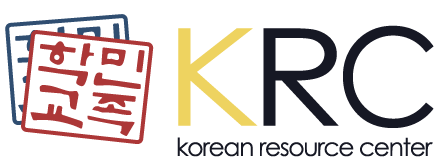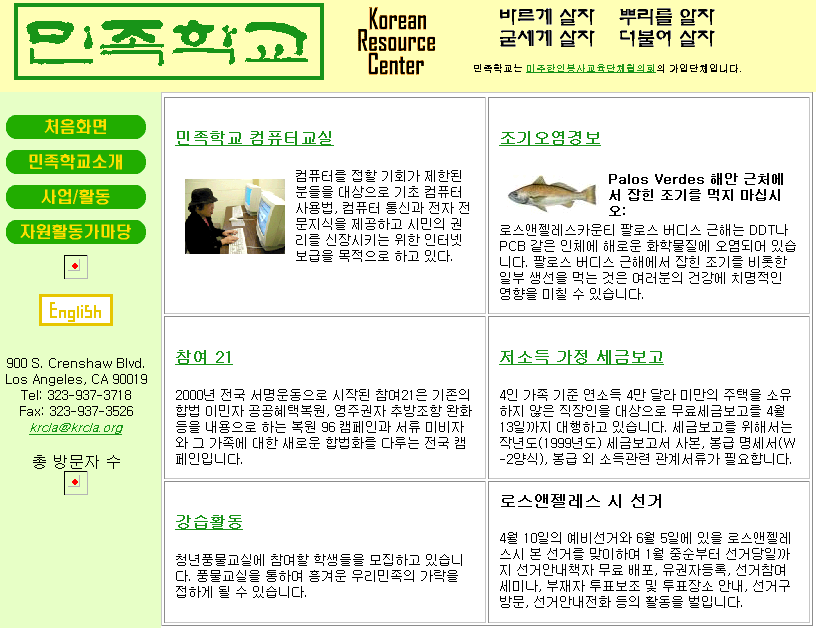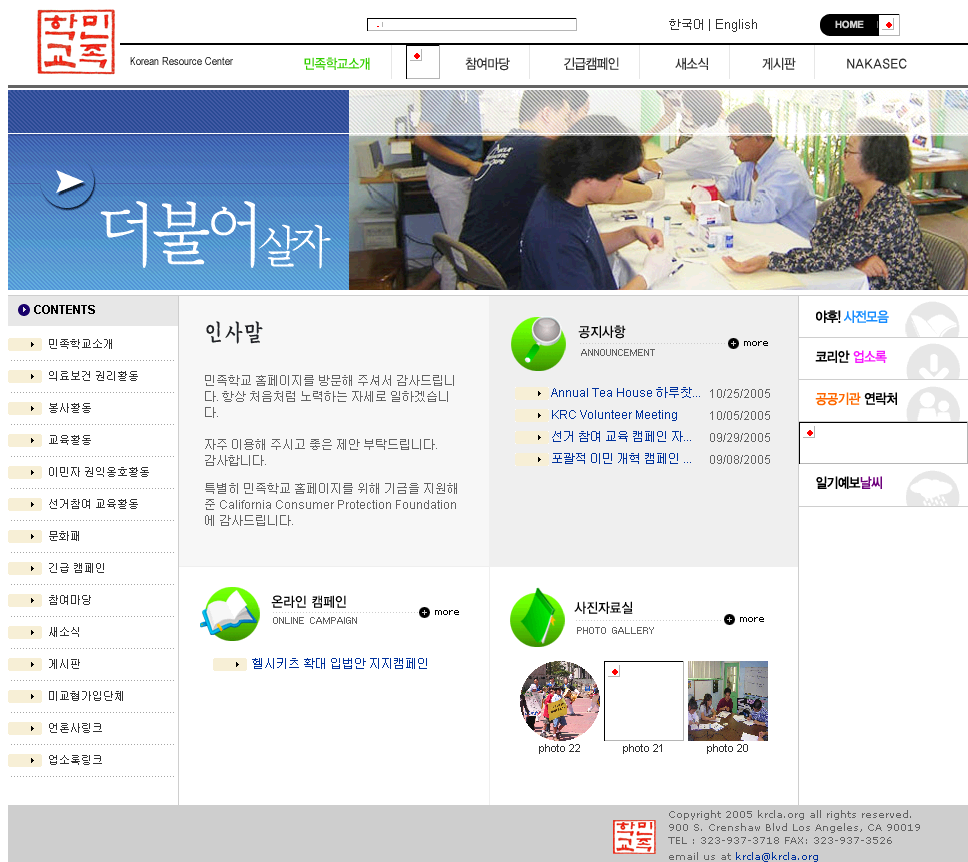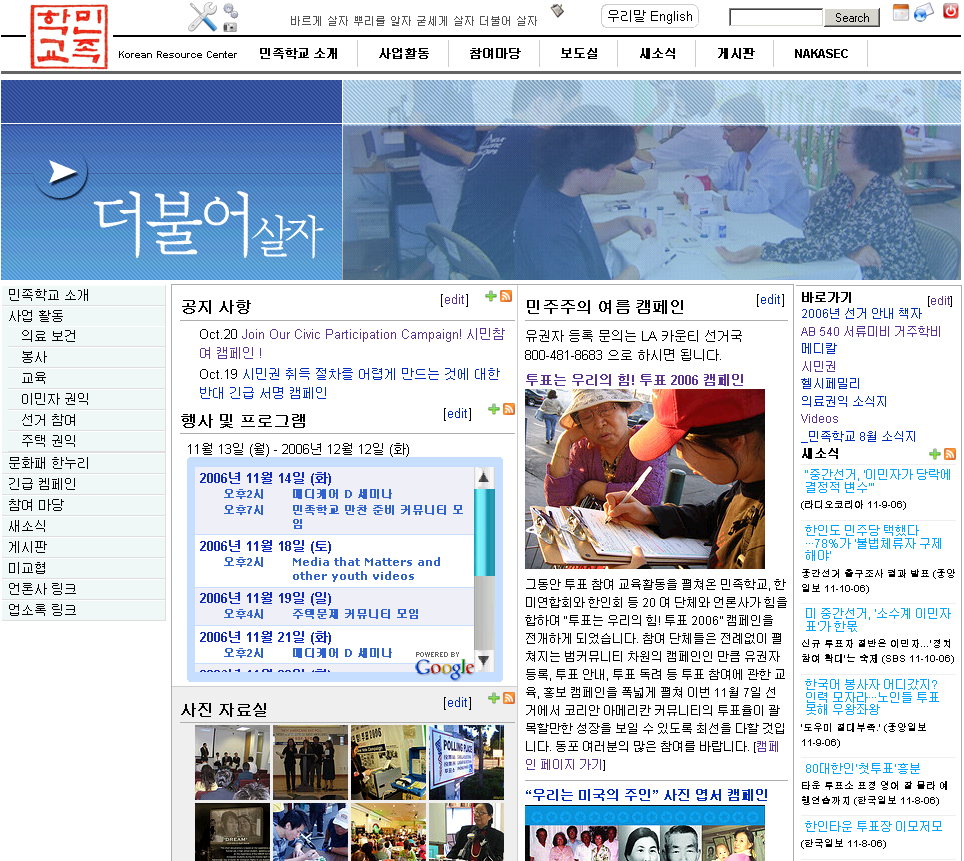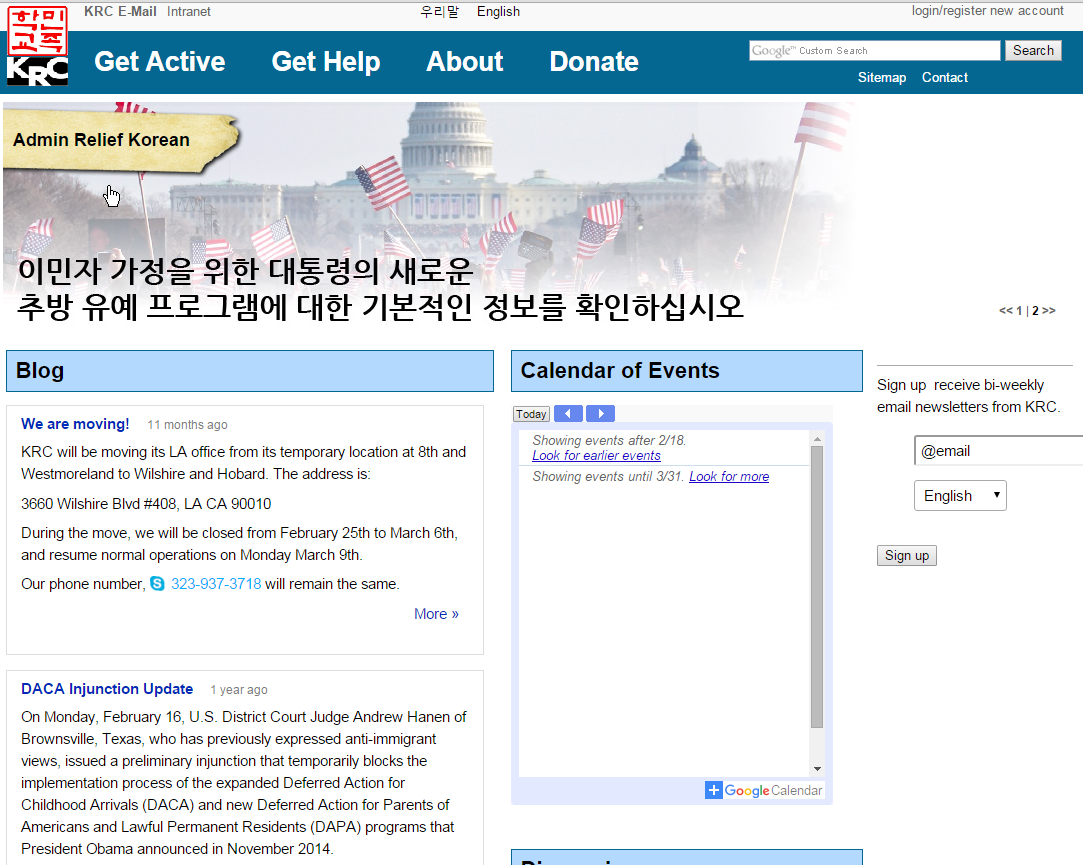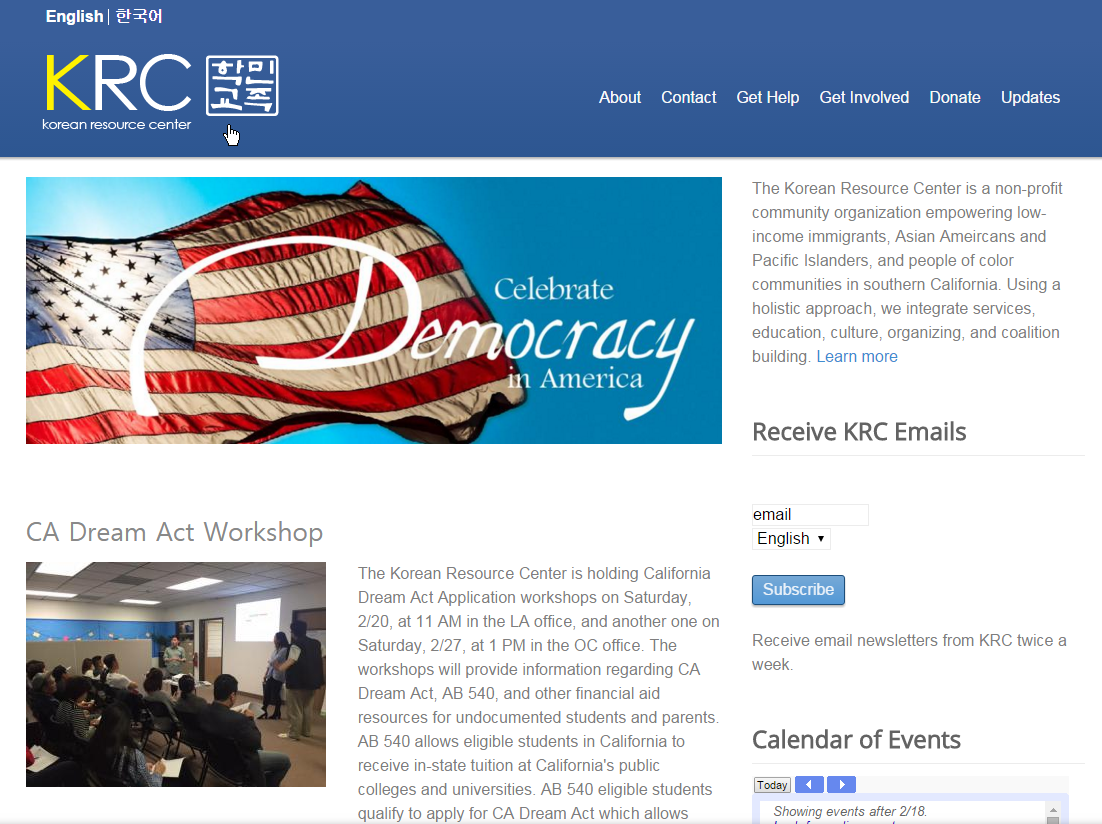민족학교 웹사이트
민족학교는 본 웹사이트를 통해 활동을 보고하고 공개된 교육자료를 배포하며 커뮤니티 구성원 및 협력 단체들과 교류하며 봉사 활동에 대한 추가 정보를 제공하고자 합니다.
We thank the generous support of the California Consumer Protection Foundation and the Asian Pacific Community Fund to build our website.
Technology
KRC's website is hosted by RimuHosting, and runs on Drupal. It draws content from our YouTube, Flickr, Vimeo and pinboard accounts. (Linked below) There is a host of collaborative and campaign-specific websites running on a WordPress multi-site setup: March 25, 2007 march for immigrant rights, Dream Riders Across America, LDK Apartments, I Want To Be Healthy Too.
History
The earliest records of the website are found in 2001, where HTML files were hand written and uploaded via FTP. The website was already bliingual at this point, although it had a one-directional point of bifurcation at the first screen.
In October 2005, with the support of the California Consumer Protection Foundation, the website acquired a new look. PhiloData designed the website. With this iteration, KRC's website started featuring extensive documentation of government programs that KRC had been built up knowledge about, such as SSI, Medi-Cal, AB540 and voter registration. It featured a community bulletin board and photos section.
The bilingual functionality was achieved by having a Javascript script overwrite the text fed by the server as it loaded, based the visitor's language cookie settings. The website ran on a shopping cart software backend.
In July 2006, the website switched to the open source platforms WordPress and MediaWiki. The transition was done in-house. WordPress ran the updates section, and MediaWiki ran the static pages.
The website introduced a feature then innovative for the open source field: a completely bilingual website. It used MediaWiki's existing multilingual feature and matched it with a custom coded WordPress bilingual plugin and theme that used hard-coded categories as language. At the time, multilingual plugins such as WPML or Polyglot were still in testing phase. Users could navigate to any section of the website and if there was equivalent content in another language, could switch to that page directly. It also performed language detection based on computer locale and remembered users' language preferences for future visits.
WIth the advent of powerful multilingual solutions, we now recommend plugins such as WPML for developing multilingual WordPress websites. WPML offers free download and support to nonprofits
A paypal donation page was added, and a custom fundraiser event page that mimicked fully featured shopping carts was later introduced. There was RSS integration with the then bookmarking platform del.icio.us for press coverage, Flickr for activity photos, and Google Calendar for events. The MediaWiki installation drew from InstantCommons for graphic elements of the website.
In 2009, in trying to keep up with WordPress upgrades, the integrated WordPress theme was rewritten using the default theme, Kubrik. The website rid itself of the flash banner and introduced a banner slideshow, but the hand coded design was showing its age. In 2013, the donation provider was moved to a PowerBase interface. In March 2015, with the support of the Asian Pacific Community Fund's communications grant, our website made the transition from WordPress to Drupal. Palante Technology Cooperative developed the site. The new site has now a responsive design that automatically adjusts to smartphones and tablets, and will soon feature a public knowledgebase about our services and a context-sensitive navigation system that will make it easier for visitors to easily get a comprehensive understanding of our programs and services.
